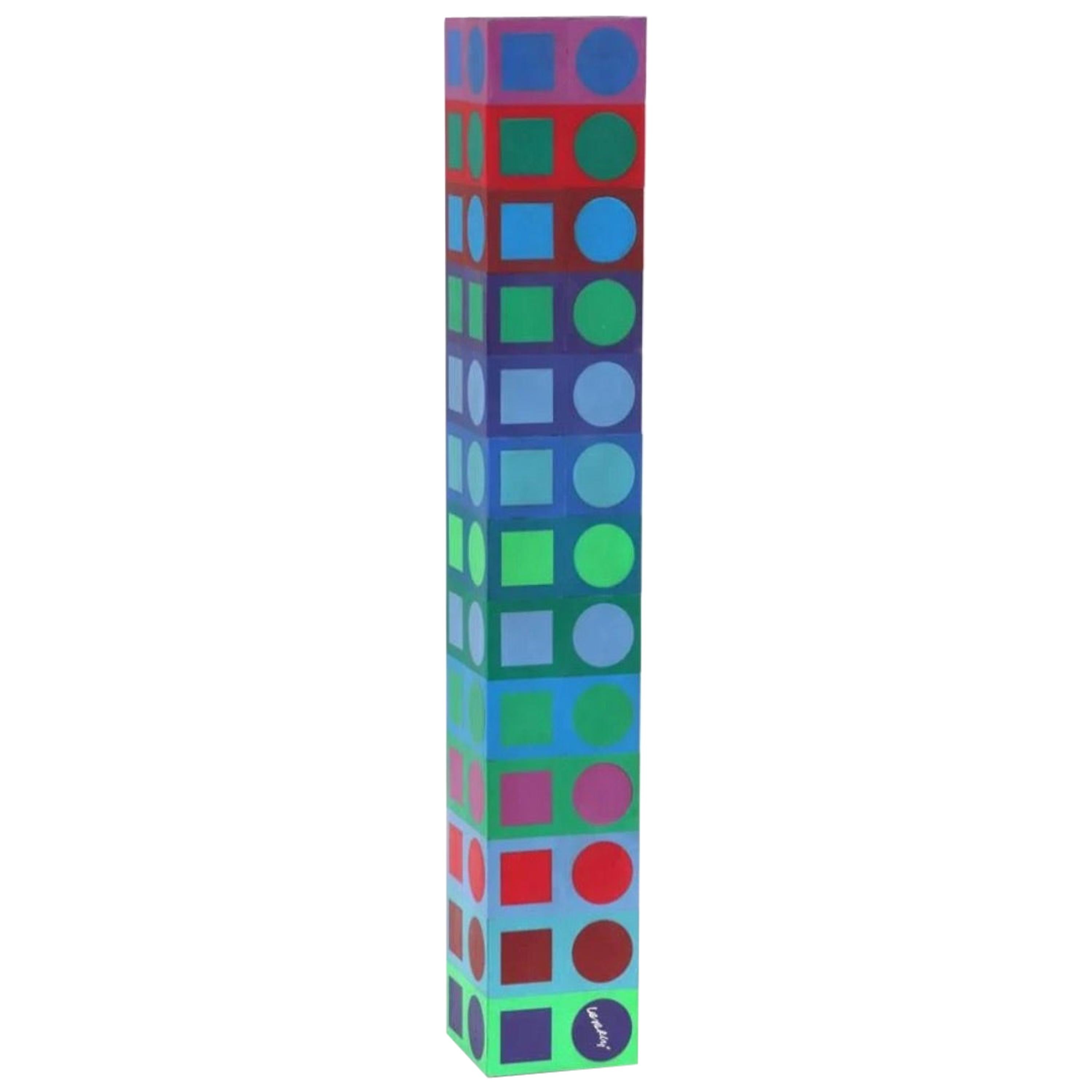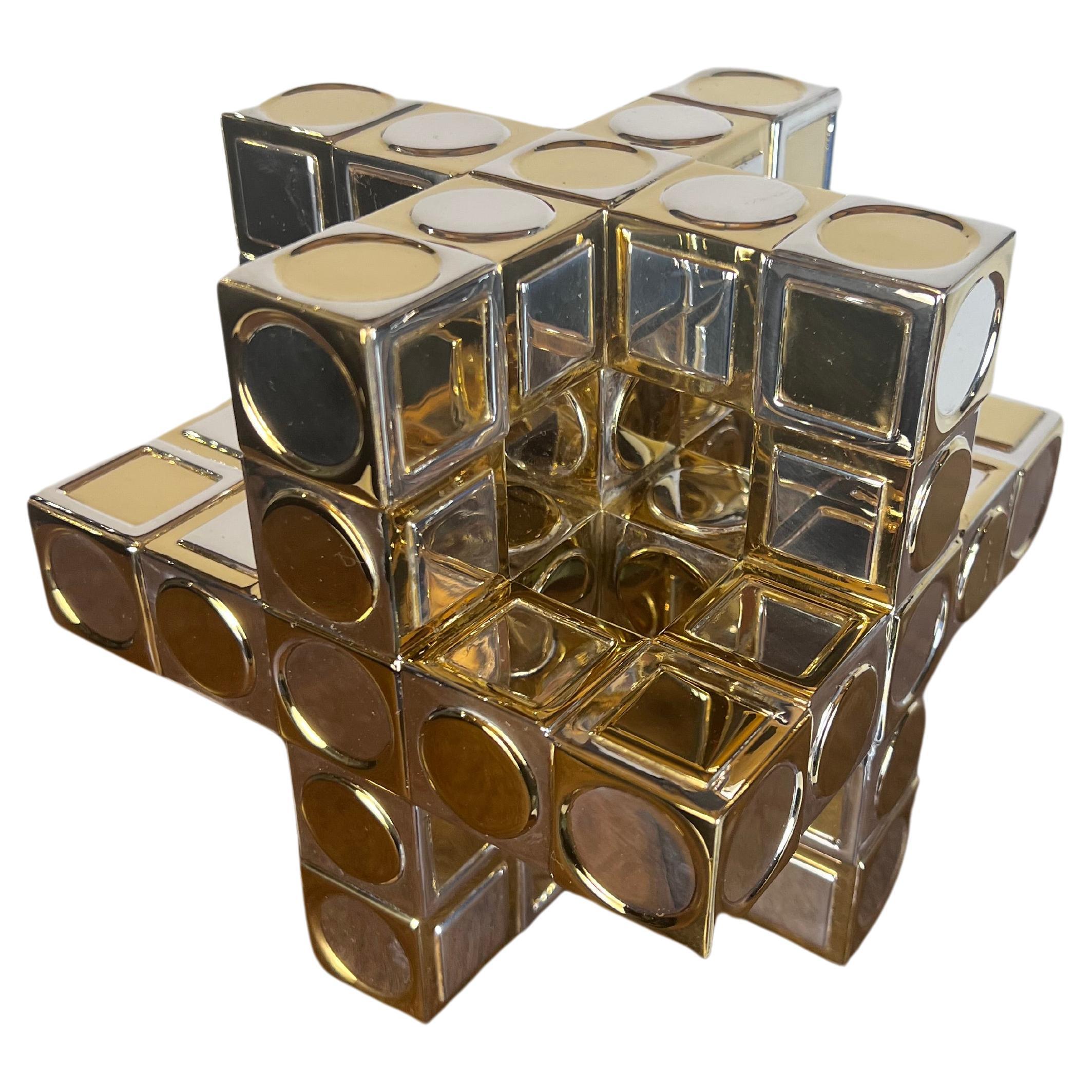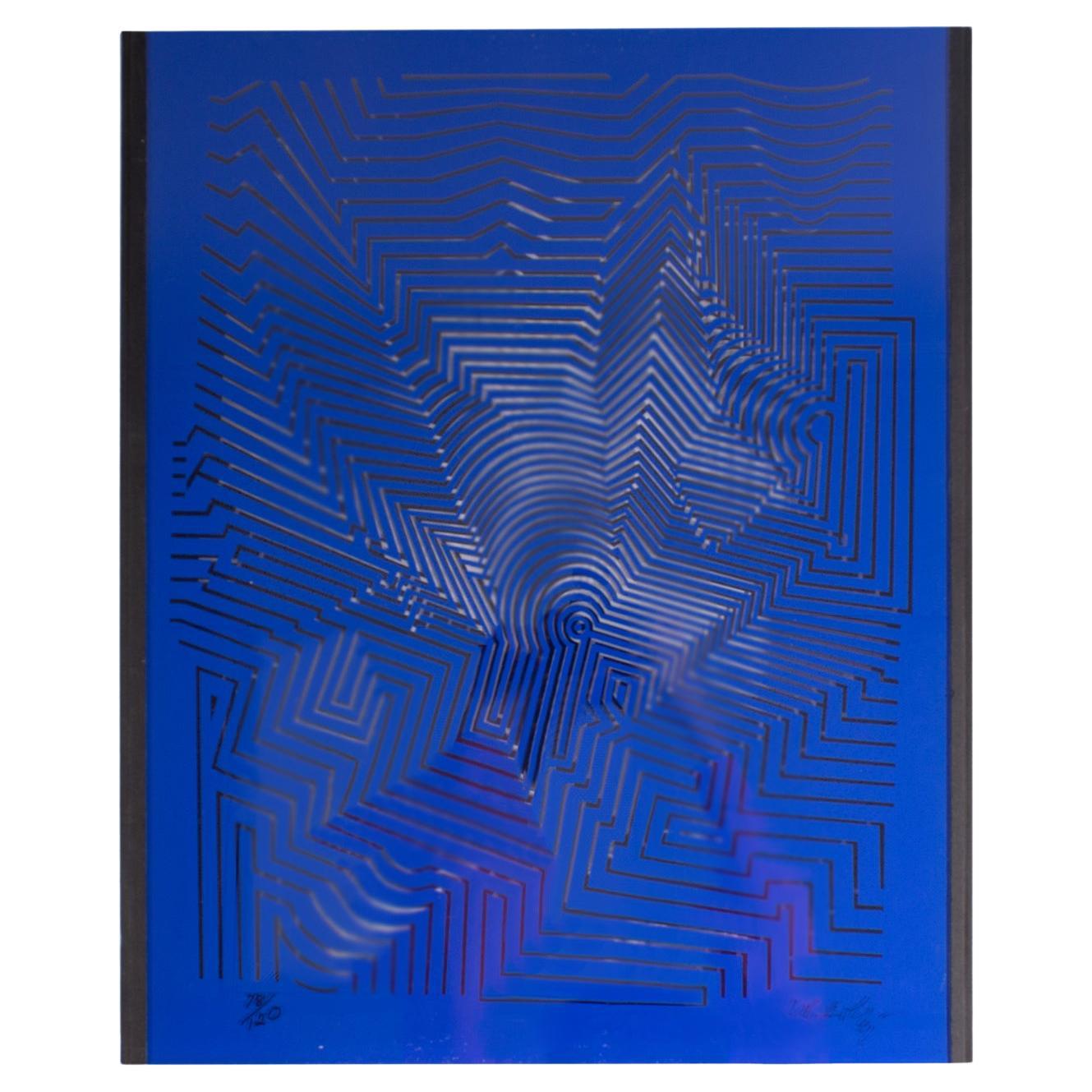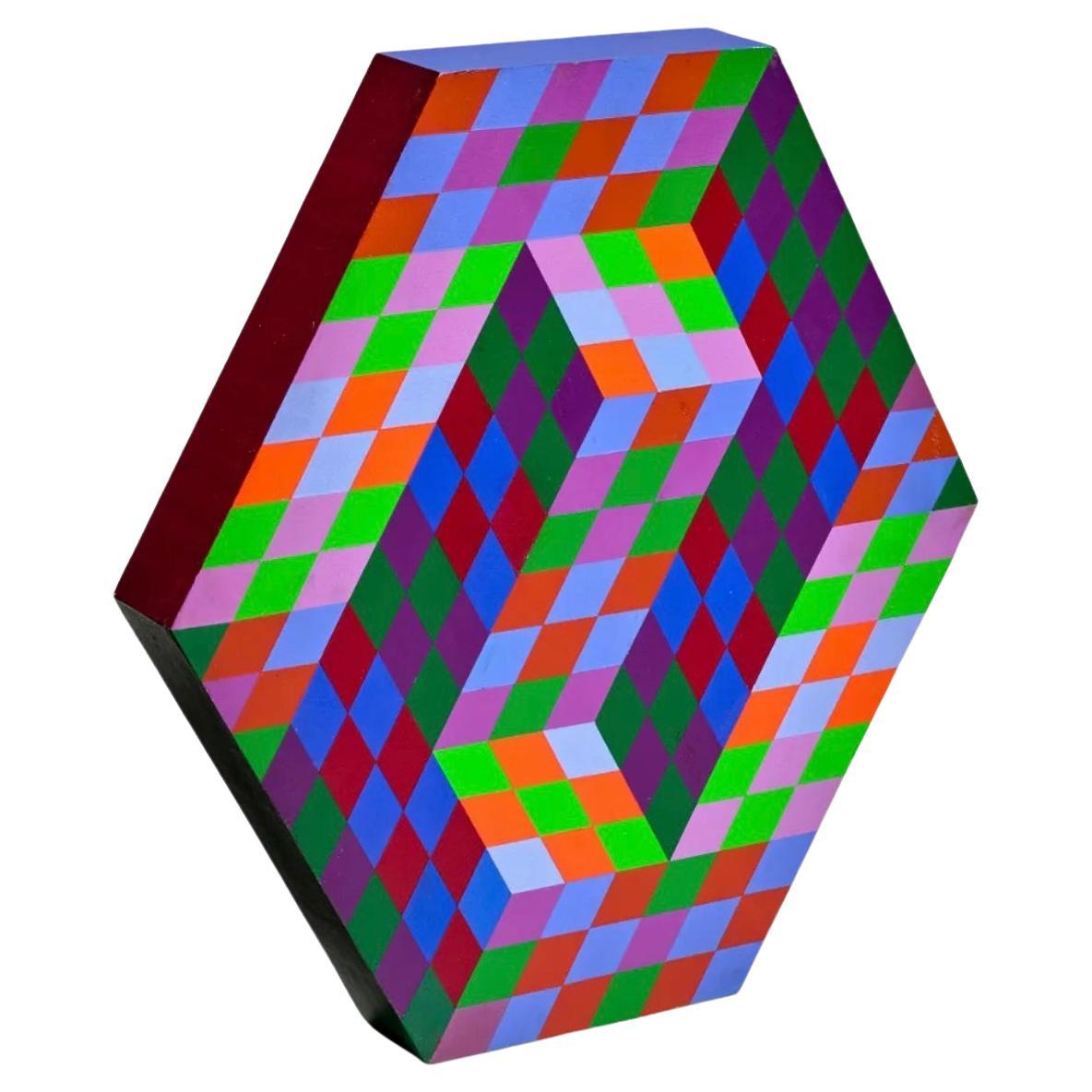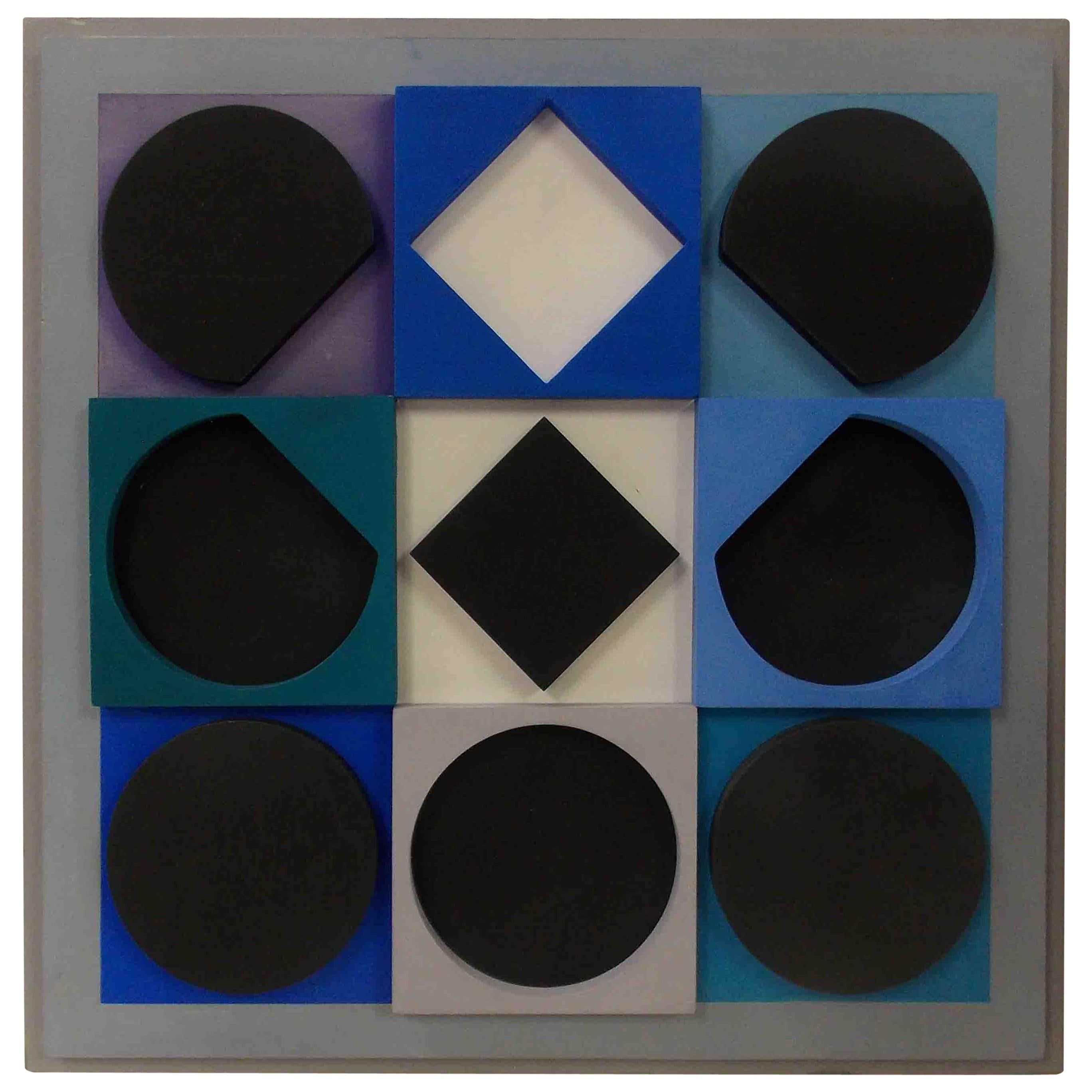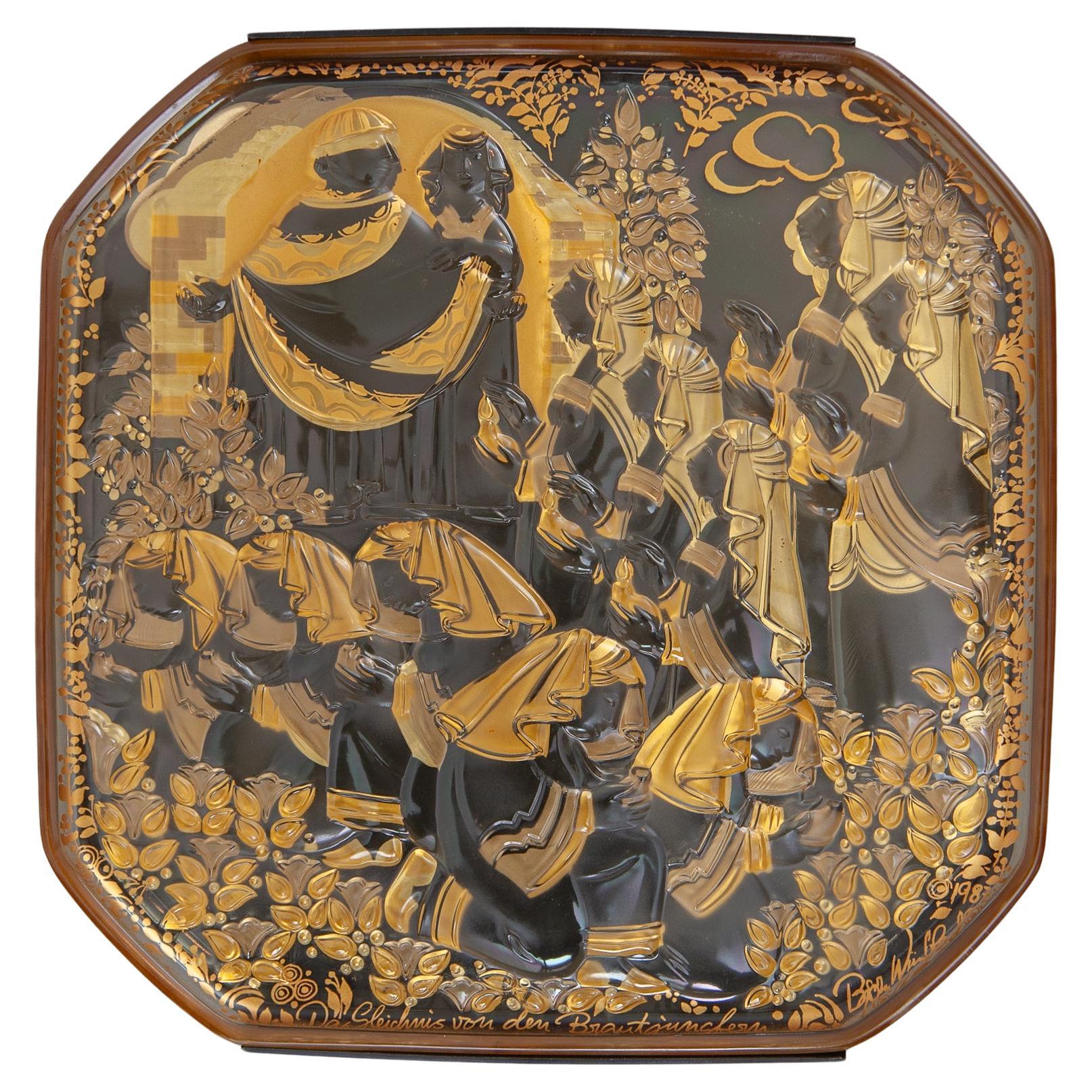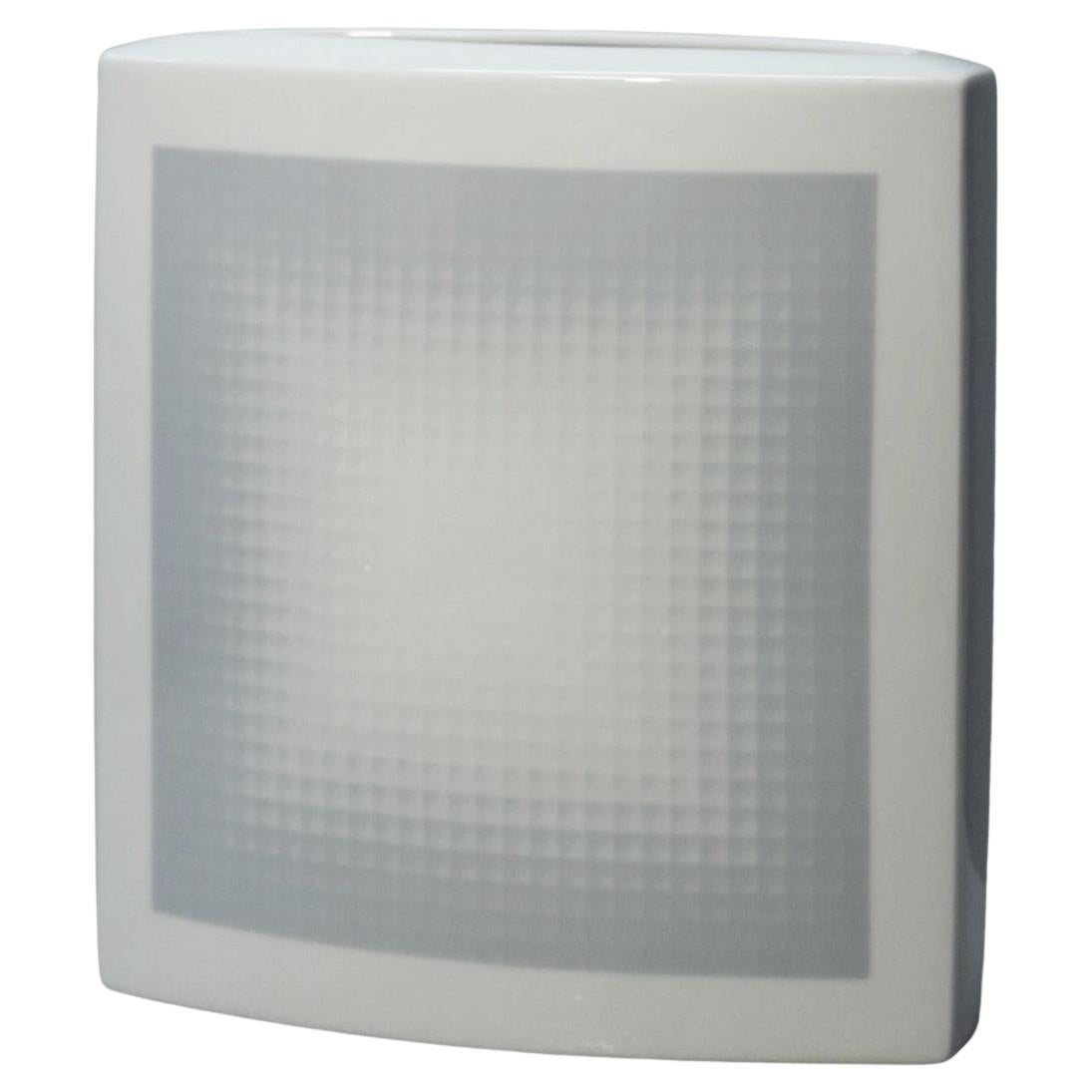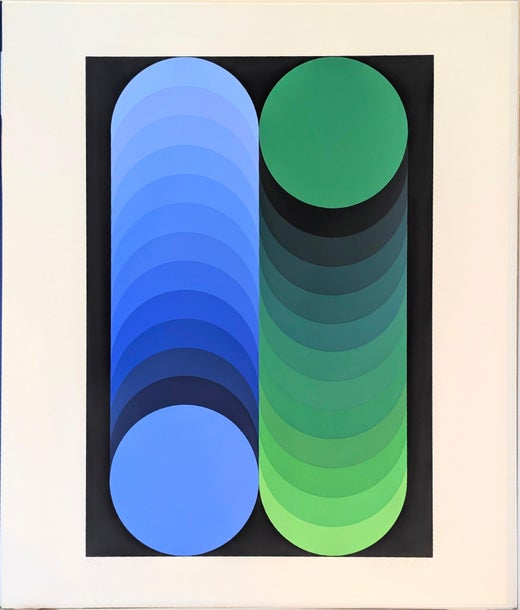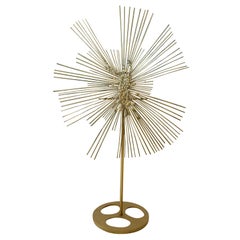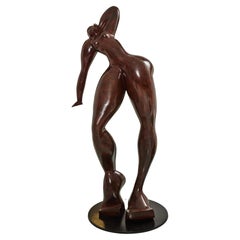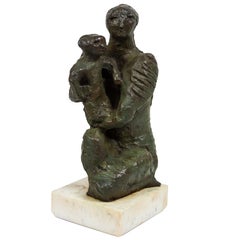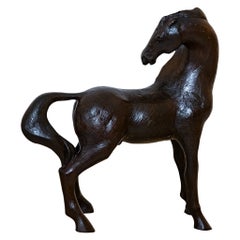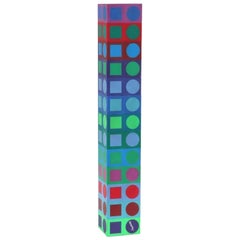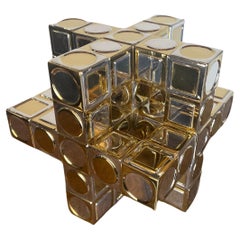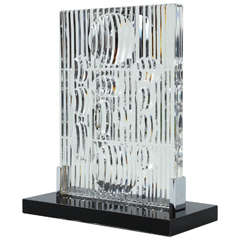
Erebus Crystal Sculpture by Victor Vasarely for Rosenthal
View Similar Items
Erebus Crystal Sculpture by Victor Vasarely for Rosenthal
About the Item
- Creator:Rosenthal (Maker),Victor Vasarely (Artist)
- Dimensions:Height: 13 in (33.02 cm)Width: 9.5 in (24.13 cm)Depth: 1 in (2.54 cm)
- Place of Origin:
- Period:
- Date of Manufacture:1982
- Condition:Wear consistent with age and use. The glass is in excellent condition. There is minor wear to the corners/edges of the lacquered base, characteristic of age, which does not detract from the beauty of the piece.
- Seller Location:Palm Desert, CA
- Reference Number:1stDibs: 14070379772271
Victor Vasarely
Widely considered the grandfather of Op art, the French-Hungarian painter Victor Vasarely (1906–97) created eye-popping geometric abstractions that play with the viewer’s perception of depth, perspective and motion. A classic example is the 1937 Zebra, which consists of undulating black and white stripes that suggest the form of the titular animal through optical trickery. The work is often credited as the earliest Op art painting.
Such illusions were more than pleasing tricks for Vasarely, who insisted that “pure form and pure color can signify the world.” He wanted to “democratize” art by producing works in large editions at reasonable prices that were understandable across national and cultural boundaries. In the 1960s, he developed an alphabet plastique, or fine art alphabet, consisting of elementary visual building blocks that could be used in endless combinations to create original compositions. By employing this universal visual vocabulary and stripping away topical references, he sought to create what he called a “Planetary Folklore.”
Embodying Vasarely’s singular belief that art should serve a social function, accessible to all, these innovations may perhaps be his greatest contribution to 20th-century art.
Find a collection of Victor Vasarely prints, paintings, sculptures and other art on 1stDibs.
Rosenthal
While the Rosenthal Porcelain Factory grew from humble decorating roots — as many pottery companies do — it eventually built a list of universally revered designer and artist partners that included Andy Warhol and Salvador Dalí. And after securing an enviable position as a top manufacturer of serveware and dominating the porcelain and bone china markets, Rosenthal expanded into furniture production, working with influential designers Verner Panton, Luigi Colani and Günther Ferdinand Ris and Herbert Selldorf.
German-born Jewish businessman Philipp Rosenthal founded the company in 1879 in Bavaria. It began as his modest workshop where he painted porcelain and encountered success with porcelain ashtrays. Rosenthal hired the best designers and clay modelers he could find. Adolf Oppel designed figurative Art Nouveau pieces, while Eleonore (Lore) Friedrich-Gronau produced decorative objects, namely her graceful porcelain dancer figurines, for the company.
Dinnerware, though, would be a Rosenthal mainstay. Between 1904 and 1910, Rosenthal produced its renowned dinnerware lines such as Donatello, Darmstadt and Isolde. These were introduced as unornamented white pieces — only later were they given their underglaze designs.
Rosenthal founder Philipp, a Catholic of Jewish ancestry, resigned in 1934 as the company’s president due to pressures owing to discriminatory German laws that took shape during the rise of the Nazi regime. Rosenthal died in 1937, and the family fled to America. The company would not regain its footing until 1950 when Rosenthal’s son, Philip, joined the firm and, in 1958, became chairman and dubbed Germany’s “China King.” At its peak, the company had 10,000 employees.
In the 1950s, Rosenthal’s modernist dinnerware was a significant part of the brand’s offerings, and by 1961 they introduced the famed Rosenthal Studio Line. Although furniture designers and ceramicists would lead the list of individuals working with Rosenthal — among them Tapio Wirkkala, Max Weber and Lisa Larson — the company eventually reached out to fine artists, not only Dalí and Warhol but Sandro Chia and Kenny Scharf. Rosenthal also collaborated with fashion designers Gianni Versace and Donatella Versace.
In a daring move in 1972, the company diversified into furniture, collaborating with some of the giants of mid-century modern design. The revolutionary Sunball chair, an icon of Space Age seating crafted by Selldorf and Ris, was among Rosenthal’s stellar successes in this venture.
On 1stDibs, find vintage Rosenthal ceramics, porcelain, tableware, seating and more.
More From This Seller
View AllVintage 1960s American Sculptures
21st Century and Contemporary French Modern Figurative Sculptures
Bronze
Mid-20th Century Argentine Brutalist Abstract Sculptures
Marble, Bronze
Vintage 1960s American Mid-Century Modern Animal Sculptures
Bronze
Vintage 1940s French Mid-Century Modern Figurative Sculptures
Bronze
Late 20th Century American Sculptures
Brass, Metal
You May Also Like
Vintage 1970s French Abstract Sculptures
Wood
Vintage 1980s French Abstract Sculptures
Acrylic
Vintage 1970s French Abstract Sculptures
Acrylic
Vintage 1970s Mexican Mid-Century Modern Abstract Sculptures
Sterling Silver
20th Century North American Post-Modern Abstract Sculptures
Lucite
Vintage 1980s Hungarian Modern Abstract Sculptures
Acrylic
Recently Viewed
View AllRead More
Get to Know the Artists Who Led the Op Art Movement
In the 1960s and '70s, the hypnotic creations of Op artists went mainstream and influenced the look of pop culture.
In Dragonette’s New Palm Desert Digs, Great Design Springs Eternal
Since leaving Los Angeles, Patrick Dragonette is experiencing a new kind of creative freedom.
